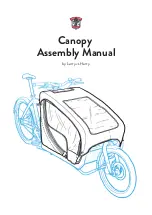
52
53
ADJUSTMENT TO THE RIDER
HANDLEBARS AND BRAKE LEVERS
Bar ends
give you additional ways of gripping the han-
dlebar. They are usually fixed in a position that gives
the rider a comfortable grip when pedalling out of the
saddle, i.e. almost parallel to the ground or tilted up-
wards at an angle of about 25 degrees.
Release the bolts, which are usually located on the
under or upper side of the bar ends, by one to two
complete turns.
Turn the bar ends to the desired position and make
sure the angle is the same on both sides.
Retighten the bolts to the required torque.
Check the firm seat of the bar ends by trying to twist
them out of position.
Carbon handlebars with bar ends require special
end caps for sealing the handlebar ends. If you have
carbon handlebars, be sure to read the manual, as
the usage of bar ends is only allowed to a limited
extent by some handlebar manufacturers.
Bar ends give you additional ways of gripping the handlebar
Retighten the bolts to the required torque
Never fix bar ends in a vertical position or
with their ends pointing towards the rear
as this would increase the risk of injury in the
event of an accident.
Note that the distance you need to stop
your bicycle increases, while riding with
your hands on bar ends. The brake levers are not
in all positions within easy reach.
Note that the bolted connections of stem,
handlebars, bar ends and brakes have to be
tightened to their specified torques. You will find
the prescribed values in chapter
“General notes on
care and inspection”
or in the enclosed manuals of
the component manufacturers. If you disregard
the prescribed values, the components may come
loose or break. This can lead to a severe crash.
BRAKE LEVER REACH
ADJUSTMENT TO THE RIDER
ADJUSTING THE
BRAKE LEVER REACH
With many brake systems the distance between the
brake levers and the handlebar grips is adjustable.
This gives riders with small hands the convenience
of being able to bring the brake levers closer to the
handlebar. The length of the rider’s fingers also de-
termines how the lever position for first brake contact
should be set.
Check the point, when the brake pads touch the
braking surfaces. If this point is reached after the
lever has only travelled a short distance, you have
to readjust the brakes. For more information on the
adjustment of the brake lever reach, see chapter
“The brake system”
. Otherwise the brake might
drag after the adjustment. If this point is, however,
reached after the lever has travelled half of its way,
there is a little play to reduce the gripping distance
of the levers.
On most bikes there is a small (headless) bolt near
the point where the brake cable or brake line enters
the brake lever mount. Screw in the bolt and watch
how the lever moves as you do so.
Hydraulic brakes are normally equipped with an
adjusting bolt at the lever, by means of which the
position can be altered.
When you have set the levers to the desired grip-
ping distance, be sure to check whether there is still
enough slack for the brake levers to move a little
before the brake pads hit the brake surfaces.
Gripping distance of the brake
Adjusting the gripping distance of the brake lever
You should not be able to pull the brake
levers all the way to the handlebars. Your
maximum brake force must be reached short of
this point!
i
Also follow the additional brake manufac-
turer’s operating instructions.
Note that the distance you need to stop
your bicycle increases, while riding with
your hands on bar ends. The brake levers are not
in all positions within easy reach.
Note that the bolted connections of stem,
handlebars, bar ends and brakes have to
be tightened to their specified torques. You will
find the prescribed values in chapter
“General
notes on care and inspection”
or in the enclosed
manuals of the component manufacturers. If you
disregard the prescribed values, the components
may come loose or break. This can lead to a se-
vere crash.
















































